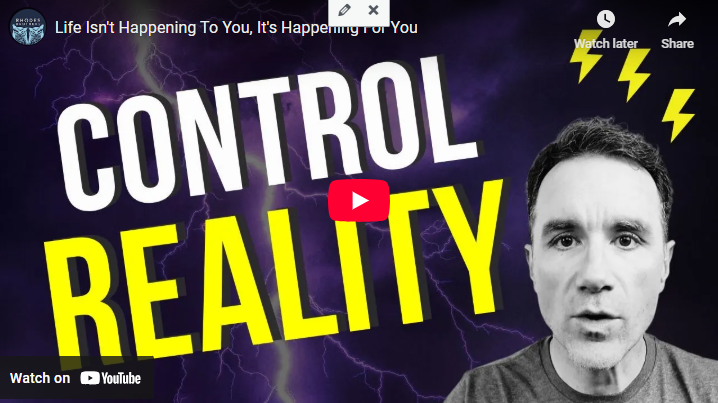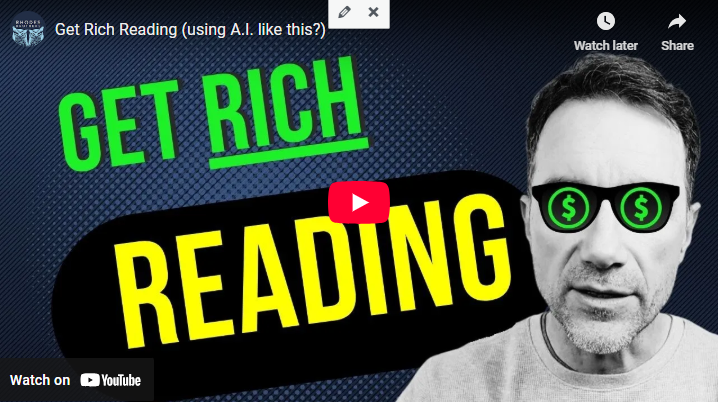For More Free Videos, Subscribe to the Rhodes Brothers YouTube Channel.
“A little smile, a slight pause, and wide-open eyes—these tiny shifts can create massive ripples in how your audience connects with you.” – John S. Rhodes, Rhodes Brothers

Think about a video where the creator instantly grabs your attention—speaking in a way that feels personal, drawing you in with a smile, a gesture, or the energy in their eyes. You can create that same powerful connection in your own videos, regardless of your experience level.
The secret lies in video production psychology—the subtle, human elements that make your videos not just watchable but unforgettable. Whether you’re a seasoned content creator or just starting out, mastering these psychological triggers will help you stand out, build trust, and even increase your video views exponentially.
In this blog post, we’ll dive into 5 fast hacks to infuse your videos with positive energy and make lasting impressions. These aren’t just random tips—they’re strategies backed by human behavior, practiced by experts like John S. Rhodes, who says, “If I smile, laugh, and look into the camera, my energy multiplies and so does my impact. It’s karmic—it comes back to me and resonates with my audience.”
So let’s unpack these simple yet powerful techniques and learn how to leverage them for better engagement, stronger connections, and, yes, a little good karma too.
TL;DR
Here’s a quick rundown of the 5 video production psychology tricks we’ll cover:
- Start with a laugh: A genuine or even playful laugh instantly builds rapport and positive energy.
- Use your eyes as windows to the soul: Opening your eyes wide and looking into the camera creates trust and connection.
- Smile strategically: A smile doesn’t just make you more likable—it’s contagious and boosts the mood of your viewers.
- Master the power of pauses: Silence creates suspense, grabs attention, and makes your words land with more impact.
- Tap into ridiculousness: Embrace the absurd and playful moments to show your personality and make your videos memorable.
Now let’s break these down step by step so you can start applying them today.
Start with a Laugh
Injecting positivity into your videos doesn’t have to be complicated. Sometimes, all it takes is a laugh. A genuine laugh—not a forced or awkward chuckle—can set the tone for your entire video. Laughter is a universal language that breaks barriers and makes you approachable.
As John S. Rhodes says, “Instant karma, instant connection. Just laugh.” It’s a simple yet powerful way to humanize yourself and create an immediate bond with your audience.
How to apply this:
- Find Your Source of Humor: Before hitting record, think of something genuinely funny. It could be a personal memory, an inside joke, or the sheer absurdity of life’s little quirks. For example, if you’re filming a video about productivity, laugh about how you’re procrastinating by making the video instead of tackling your to-do list.
- Keep It Authentic: Don’t overthink your laugh. Even if it’s slightly awkward, authenticity resonates more deeply with viewers than perfection.
- Use Laughter as an Icebreaker: Start your video with a laugh to immediately put your audience at ease or sprinkle in a humorous moment to lighten heavier topics.
Tools to Help:
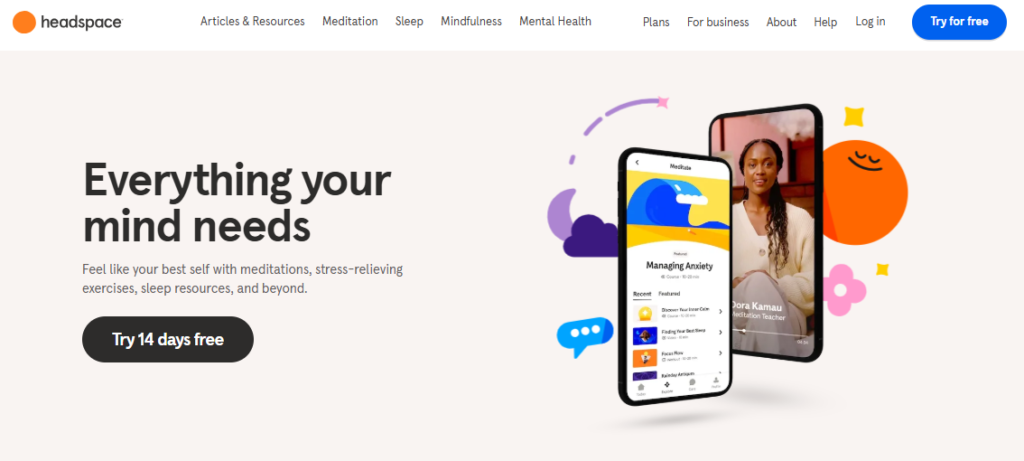
- Comedy Podcasts: Listen to comedy podcasts like The Daily Smile for inspiration and to get into the right mindset before recording.
- Energy Boosters: Watch a quick, funny YouTube video or listen to a comedy clip to prime your mood. Apps like Headspace even offer laughter meditation sessions to help you relax and bring positive energy into your videos.
Pro Tip:
- Record yourself laughing during your first takes. Play it back to see how it feels. Genuine laughter is contagious, and your audience will feel it too.
Use Your Eyes as Windows to the Soul
Eye contact is one of the most powerful tools for building trust and forging connections. When you look directly into the camera, your audience feels like you’re speaking directly to them. This simple act transforms a one-sided video into a personal conversation.
As John S. Rhodes notes, “Eyes are a window into the soul. If you’re properly looking into the camera, people will feel your positive energy.”
How to apply this:
- Open Your Eyes Wider: Slightly widening your eyes while speaking conveys sincerity, excitement, and interest.
- Visualize a Friend: Imagine you’re talking to a close friend sitting just behind the camera. This mental trick helps you make your gaze feel more personal and less robotic.
- Steady Your Focus: Avoid darting your eyes around or looking away from the lens. Treat the camera lens as the eyes of your audience.
Tools to Help:
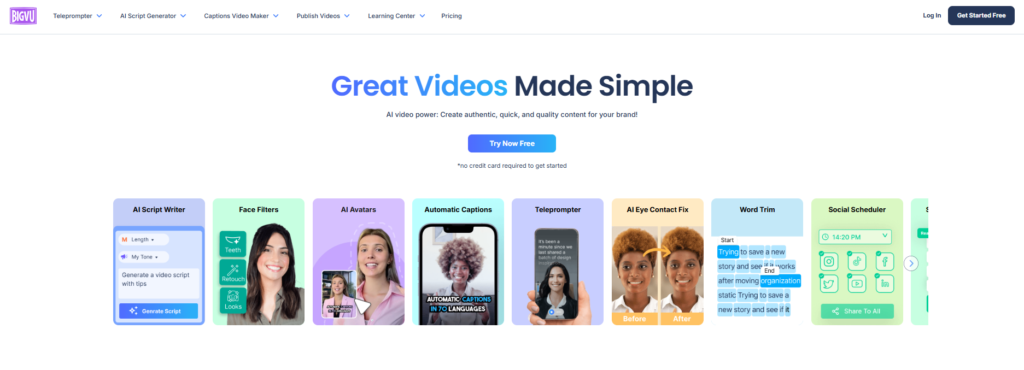
- Teleprompter Apps: Use apps like BigVu or PromptSmart to read scripts while maintaining direct eye contact with the camera. These tools ensure you stay focused without losing your connection with the audience.
- Ring Lights: A ring light with a built-in phone holder ensures that your eyes are well-lit and the focus remains on your expression.
- Eye Contact Practice: Apps like Charisma on Command (via their YouTube videos or courses) can help you improve your eye contact and body language.
Pro Tip:
Pair eye contact with a smile to amplify warmth and relatability. When your eyes and smile work together, the emotional connection becomes almost tangible.
Smile Strategically
Smiling isn’t just about looking friendly—it’s about creating an emotional bridge between you and your viewers. According to research, smiling releases dopamine and serotonin, boosting both your mood and that of your audience.
As the saying goes, “A smile is the universal welcome.”
How to apply this:
- Smile at Key Moments: Use your smile as punctuation—for instance, when introducing yourself, emphasizing an important point, or wrapping up a video.
- Practice Makes Natural: Spend a few minutes practicing your smile in front of a mirror to find the balance between genuine and over-the-top.
- Make It Contextual: Smile to match the tone of your content. For example, a subtle smile works better for serious topics, while a big grin can energize lighter content.
Tools to Help:
- Mirror Training: Use a vanity mirror with adjustable lighting to practice smiling in different contexts.
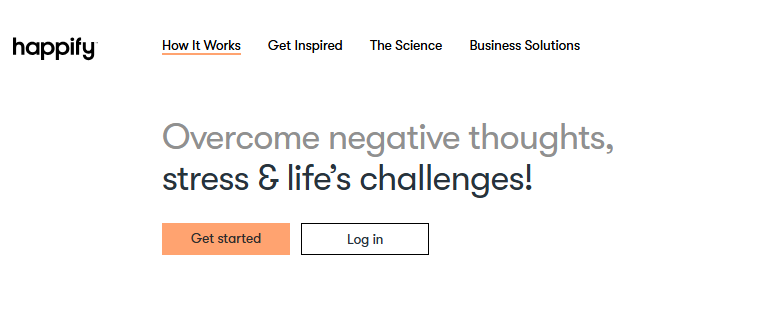
- Mood-Boosting Apps: Apps like Happify or Calm can help you get into a positive headspace before recording.
- Facial Expression Analyzers: Use tools like Facial Feedback AI to analyze your expressions and adjust them to appear more genuine on camera.
Pro Tip:
If you’re teaching something complex, a smile can help break down barriers and make your content feel more approachable. For example, if you’re explaining a difficult concept, smiling at the end of your explanation can reassure viewers and reduce their stress.
Master the Power of Pauses
Pauses give your words weight. They create a rhythm that keeps your audience engaged while giving them time to process your message. A well-timed pause can also build suspense and make your next sentence more impactful.
As Rhodes says, “Humans love predicting. As soon as I pause, your mind starts to fill in what I’m going to say next.”
How to apply this:
- Pause After Big Questions: Ask a thought-provoking question, then pause to let your audience reflect. For example, in a motivational video, you might say, “What would you do if you couldn’t fail?” and then pause for a few seconds.
- Break Up Long Sentences: Use pauses to segment your ideas, making your message easier to follow.
- Practice Your Timing: Read your script aloud and mark where you want to pause for emphasis.
Tools to Help:
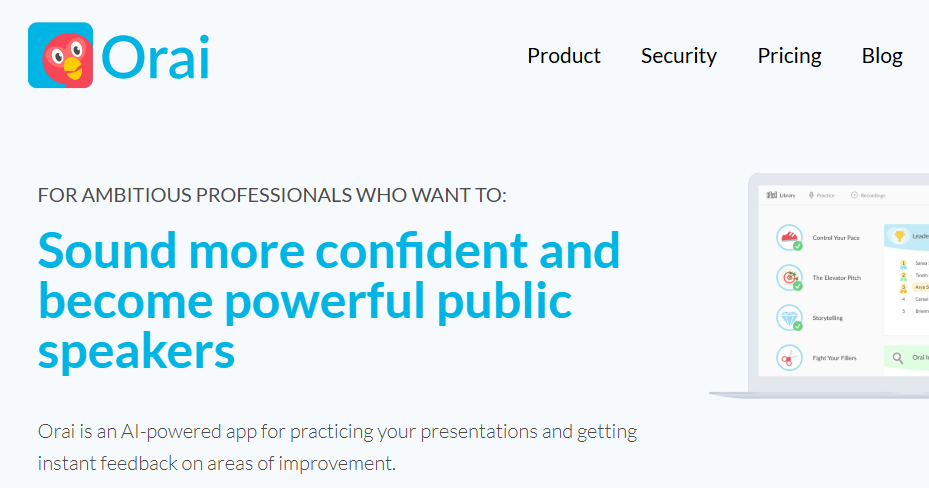
- Speech Practice Apps: Apps like Orai can analyze your speech patterns and help you master the art of pausing.
- Script Markers: Use tools like Google Docs or Notion to highlight or bold places in your script where you should pause.
- Metronome App: A metronome app like Pro Metronome can help you practice pacing and timing.
Pro Tip:
Silence is powerful. Use it sparingly but strategically, especially when delivering key points or transitioning between ideas.
Tap Into Ridiculousness
Life is full of quirks and absurdities, and embracing them adds personality to your videos. By letting your guard down and showing your playful side, you make your content more relatable and memorable.
As John S. Rhodes says, “People resonate with the ridiculousness of life and how absurd so many things are.”
How to apply this:
- Be Playful: Share a lighthearted or embarrassing story that ties into your video’s theme. For instance, if you’re teaching a skill, mention all the times you failed at it before getting it right.
- Highlight Irony: Point out the funny contradictions in everyday life to show you don’t take yourself too seriously.
- Use Gestures and Exaggeration: Playful hand gestures or exaggerated expressions can emphasize your points and keep your audience engaged.
Tools to Help:
- Storytelling Prompts: Use tools like Storyworthy or The Storymatic to brainstorm quirky anecdotes to share in your videos.
- GIF Creators: Create funny GIFs of yourself using tools like Giphy to add humor and personality to your video edits.
- Body Language Training: Apps like Body Language Decoder can help you incorporate playful and engaging gestures into your delivery.
Pro Tip:
Ridiculousness doesn’t mean clownish behavior—it’s about being human. Share moments that show your audience you’re just like them, navigating life’s little absurdities.
By combining these tools and techniques, you can elevate your video production, craft stronger connections, and create content that leaves a lasting impact. Whether you’re laughing, smiling, pausing, or embracing life’s quirks, each element helps you tap into the psychology of human connection.
Actionable Steps for Different Demographics
No matter your experience level or target audience, mastering these video production psychology hacks—like laughing, smiling, making eye contact, pausing, and embracing life’s quirks—can elevate your content. Here’s how you can apply these techniques based on your unique needs and demographic.
For beginners, the focus should be on building confidence and experimenting with your delivery. Start by recording a simple test video where you practice laughing, smiling, and making eye contact with the camera. Watch it back and note what feels natural versus forced—don’t aim for perfection, just focus on being genuine. Writing a basic script beforehand can also help you plan where to pause, smile, or emphasize key points. Tools like Loom or your phone’s camera are perfect for practicing, while apps like Descript can help you edit and analyze your takes. Once you’ve recorded, share your video with a trusted friend or family member to get feedback on whether your energy feels authentic and engaging. From there, focus on improving one technique at a time with every new video you create. Over time, this iterative process will help you feel more comfortable and confident on camera.
If you’re an intermediate creator, the key is refining your techniques and building deeper emotional connections with your audience. Experiment with timing to master the power of pauses, testing how silence after a question or key point can enhance impact. For instance, pausing after asking, “What would you do if you couldn’t fail?” can give your audience time to reflect. Watch your previous videos and identify moments where your smiles or expressions felt most genuine—then use those insights to strategically enhance your delivery. Incorporate humor by sharing a funny or personal story that ties into your video’s theme, or even use playful gestures to make your content more relatable. Tools like Giphy Cam can help you create fun, humorous visuals to add personality to your videos. Additionally, engaging your audience directly—such as by asking them to share their own funny stories in the comments—can boost interaction and make your content feel like a two-way conversation.
For advanced creators, the challenge lies in perfecting the art of engagement and mastering subtle techniques. Focus on refining micro-expressions, such as eyebrow raises or subtle smiles, to amplify the emotional connection with your viewers. Pay attention to the details of your expressions, as small adjustments can make a big difference in how relatable you appear. Tools like Facial Feedback AI or Emotion Capture Tools can analyze your expressions and help you refine them. Use pauses strategically, not just for emphasis but also to create dramatic tension or comedic timing. For example, a slightly longer pause before delivering a punchline can make it land more effectively. You can also personalize your eye contact by imagining you’re speaking to a specific segment of your audience, such as beginners or professionals, to make your tone feel tailored and intimate. Hosting live Q&A sessions is another excellent way to practice these techniques in real-time while connecting directly with your audience. Platforms like StreamYard or Restream can help you host high-quality live streams with professional overlays and engagement features. Lastly, use analytics tools like TubeBuddy or VidIQ to review comments, likes, and watch time, allowing you to track which techniques resonate most with your audience and fine-tune your approach.
For younger creators like Millennials and Gen Z, authenticity and relatability are key. This demographic thrives on casual, conversational content that feels genuine and approachable. Embrace imperfections by laughing at yourself, sharing quirky stories, and showing off your personality. Use trending memes or pop culture references to keep your content fresh and relevant—platforms like TikTok and Instagram Reels Insights can help you track trends and adapt them creatively. Humor plays a big role in connecting with this audience, so ask for participation in the form of comments or challenges. For example, you could say, “What’s the most ridiculous productivity hack you’ve fallen for? Share it below!” This type of relatable humor builds community and boosts engagement. Editing apps like CapCut or InShot are great for adding fun captions, emojis, and sound effects to match your playful tone.
For professionals and business creators, it’s all about balancing personality with credibility. Start your videos with a light, industry-specific joke or anecdote to humanize yourself while setting a professional tone. For example, a marketer might open with, “Have you ever spent more time formatting a spreadsheet than analyzing the data? Yeah, me too.” Smiling naturally at key moments, such as when introducing yourself or emphasizing important points, creates warmth without compromising authority. Lighting tools like Lume Cube can ensure your expressions are polished and professional. Sharing personal, relatable stories—such as a campaign that flopped and the lessons you learned—adds depth to your content and makes you more approachable. Tools like Infogram or Piktochart can help you create engaging visuals to deliver statistics in a lighthearted way.
Common Mistakes to Avoid
Forcing a Smile or Laugh
One of the most common mistakes in video production is forcing a smile or laugh. Viewers can spot inauthenticity from a mile away, and a fake smile or laugh can make you seem disingenuous or uncomfortable. Instead, aim to cultivate genuine moments of joy or humor. Think of something that naturally makes you smile or laugh—whether it’s a funny memory, an inside joke, or even the absurdity of life. Authenticity resonates far more deeply with your audience, so don’t feel pressured to manufacture emotions. Let your personality shine through naturally, and your viewers will feel a real connection with you.
Overusing Pauses
Pauses are a great tool for creating emphasis, but overusing them can have the opposite effect. Too many pauses can make your delivery feel awkward, choppy, or disrupt the natural flow of your message. Instead of engaging your audience, it might leave them confused or impatient. To avoid this, use pauses strategically—after asking a thought-provoking question or when emphasizing a key point. Practice your timing by reading your script aloud and marking where pauses feel most effective. When used sparingly and with purpose, pauses will add impact to your delivery without throwing off your rhythm.
Ignoring Body Language
Body language plays a critical role in how your message is received, and ignoring it can make your video feel flat and unengaging. Hand gestures, facial expressions, and overall posture are essential for complementing your words and conveying energy. Without them, you risk appearing stiff or robotic, which can deter viewers from connecting with you. Make a conscious effort to use open, natural gestures and expressive facial movements to enhance your message. Practicing in front of a mirror or recording yourself can help you identify areas where your body language might need improvement. Remember, your audience responds to both what you say and how you say it.
Being Overly Self-Critical
Lastly, being overly self-critical is a mistake that holds many creators back. Video production is a skill that takes time and practice to perfect, and expecting perfection from the start leads to unnecessary frustration. Instead of fixating on imperfections, treat each video as an opportunity to learn and grow. Focus on small improvements with every new project, whether it’s refining your delivery, improving lighting, or experimenting with new techniques. Embracing the learning process not only boosts your confidence but also helps you create better, more authentic content over time. Remember, progress is more important than perfection.
Frequently Asked Questions
How do I make my videos more engaging?
Focus on authentic energy—laugh, smile, and make eye contact with the camera.
Do I need expensive equipment to apply these hacks?
No! These techniques rely on your delivery, not your gear.
What if I’m camera-shy?
Start small—record short practice videos and focus on one technique at a time.
Can I use these hacks for live streams?
Absolutely! The same principles apply to live video.
How can I get better at pausing naturally?
Practice reading scripts aloud and mark where you want to pause for emphasis.
How do I make my laughter or smile feel authentic on camera?
Think of something genuinely funny or joyful before recording. Reflect on a memory, a silly thought, or even the absurdity of the situation to create a natural reaction.
What’s the best way to practice eye contact with the camera?
Imagine the camera lens as a close friend or someone you trust. You can also use teleprompter apps like PromptSmart to help maintain focus while reading your script.
How can I add humor to professional or serious topics?
Use light, relatable anecdotes or make playful observations about the quirks of your industry. For example, laugh at common frustrations your audience might share to make your content more relatable.
What if I feel awkward using hand gestures or facial expressions?
Practice in front of a mirror or record yourself to get comfortable. Over time, these gestures will start to feel more natural. Apps like Orai can also help you analyze your delivery and refine your body language.
How do I know which techniques are resonating with my audience?
Check engagement metrics like comments, likes, and watch time. Tools like TubeBuddy or VidIQ can help you track these insights and identify which parts of your videos are connecting with viewers.
Mastering Video Production Psychology
Creating engaging videos isn’t about having the fanciest equipment or the most sophisticated script—it’s about connecting with your audience on a human level. By mastering simple yet powerful techniques like laughing, maintaining eye contact, smiling, pausing, and embracing the absurdities of life, you can transform your videos into compelling experiences that resonate deeply with viewers.
As John S. Rhodes wisely said, “Putting positive energy out there comes back to you. It’s karmic—it’s the cycle of life.” When you bring authenticity and positivity into your videos, you create a ripple effect of engagement, trust, and joy.
- Apply One Hack Today: Choose one of the five hacks—laughing, eye contact, smiling, pausing, or embracing ridiculousness—and use it in your next video.
- Review Your Energy: Watch your own videos critically. Are you projecting the kind of energy you’d want to receive?
- Experiment and Iterate: Don’t be afraid to try new things. Video production is a skill that grows over time with experimentation and feedback.
- Subscribe for Inspiration: For more tips, insights, and examples, subscribe to the Rhodes Brothers YouTube channel. Their practical advice and engaging content will keep you motivated and inspired.
Every small improvement you make in your videos compounds over time. The more you practice, the more natural these techniques will feel—and the stronger your connection with your audience will become.
Resource List
Here’s a curated list of tools, books, and resources to help you refine your video production skills and master the psychology behind audience engagement:
Books
- “The Like Switch: An Ex-FBI Agent’s Guide to Influencing, Attracting, and Winning People Over” by Jack Schafer
- “Made to Stick: Why Some Ideas Survive and Others Die” by Chip Heath and Dan Heath
- “Show Your Work!” by Austin Kleon
Courses
- HubSpot Academy: Free courses on video marketing and content strategy
- MasterClass: Storytelling and communication lessons from creators like Neil Gaiman and Shonda Rhimes
Tools
- BigVu: A teleprompter app perfect for maintaining eye contact while reading scripts
- Canva: For creating professional-looking thumbnails to boost video click-through rates
- Descript: For video editing, transcription, and adding captions
- Loom: A tool for creating quick, high-quality videos to share with audiences
Podcasts
- The Video Creators Podcast with Tim Schmoyer
- Think Media Podcast with Sean Cannell
- The Colin and Samir Podcast for insights on creative storytelling
Online Communities
- Reddit: Join subreddits like r/VideoEditing and r/YouTube for discussions and advice
- Facebook Groups: Look for video marketing and creator support groups to network and learn
Free Tools and Resources
- YouTube Creator Academy: Free resources for optimizing your YouTube content strategy
- VidIQ: A browser extension to track keywords and improve your video SEO
- Pexels/Videvo: Free stock footage to enhance your videos


